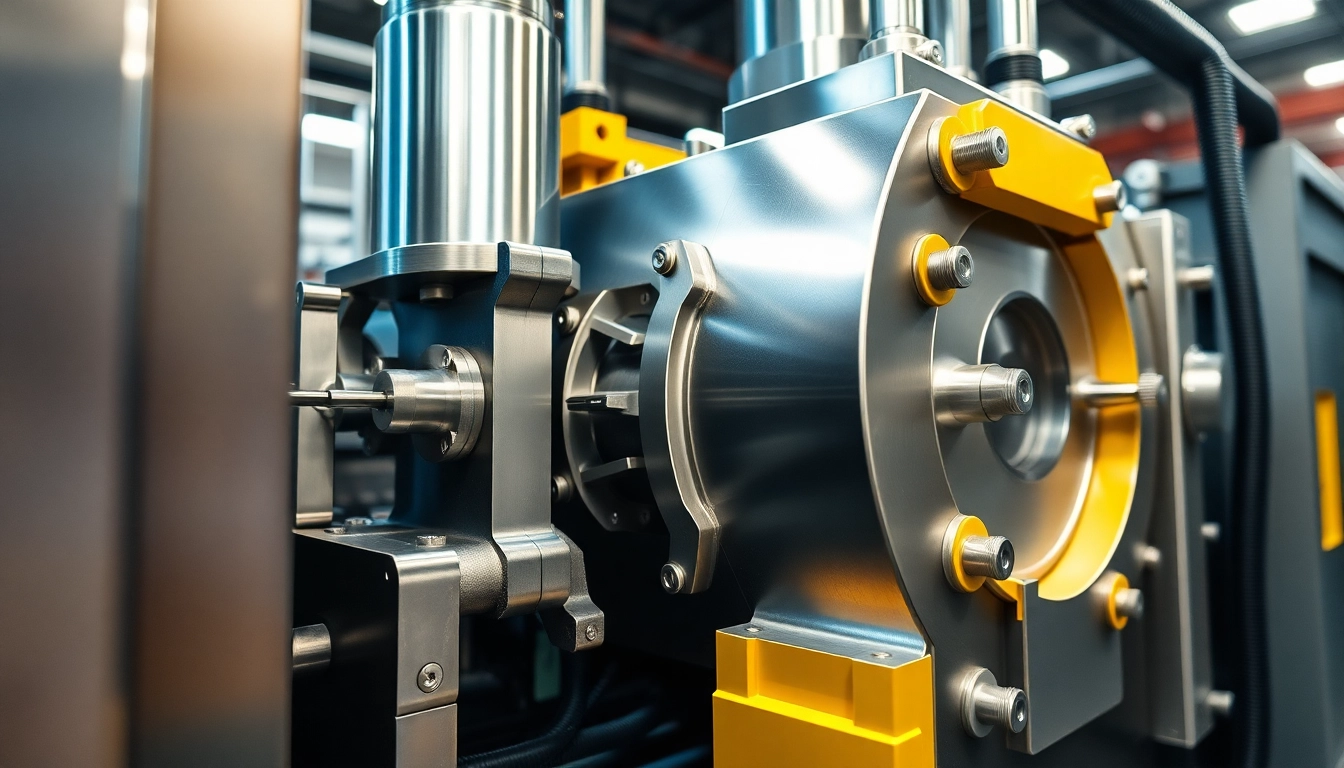Understanding Blow Molding Machines
What is a Blow Molding Machine?
A Blow Molding Machine is a manufacturing device used to create hollow plastic parts through a process known as blow molding. This specialized machinery operates by forming a heated tube of plastic, known as a parison, which is then inflated within a mold to form various shapes, typically containers or bottles. The versatility and efficiency of blow molding machines have made them extremely popular in industries ranging from packaging to automotive manufacturing.
Types of Blow Molding Processes
Blow molding processes can be primarily categorized into three types: extrusion blow molding (EBM), injection blow molding (IBM), and injection stretch blow molding (ISBM). Each process has distinct characteristics and applications:
- Extrusion Blow Molding (EBM): This process involves extruding a parison and then inflating it within a cooled mold. EBM is ideal for producing large bottles and containers and is known for its efficiency in producing thick-walled structures.
- Injection Blow Molding (IBM): In this method, a preform is injection-molded and then transferred to a blow mold where it is inflated. This is particularly beneficial for creating complex geometries and is popular in the production of small to medium-sized containers.
- Injection Stretch Blow Molding (ISBM): This method combines injection molding and stretch blowing to create lightweight, strong containers. It is commonly used for manufacturing PET bottles and is noted for its efficiency and high-quality output.
Key Components and Technologies
Understanding the core components of blow molding machines is essential for appreciating their functionality and efficiency. Some key components include:
- Extruder: Responsible for heating and melting the plastic material before it is formed into a parison.
- Mold: The structure that shapes the plastic as it is inflated; molds can be designed for various shapes and sizes.
- Blow mechanism: Tools used to inject air into the parison, allowing it to take on the shape of the mold.
- Controls and Automation: Advanced blow molding machines often include computerized systems that facilitate precision monitoring and adjustments during the molding process.
Benefits of Using Blow Molding Machines
Cost Efficiency and Production Speed
One of the primary advantages of blow molding machines is their cost efficiency. They can produce large quantities of plastic products quickly, which is crucial in industries where demand fluctuates. For instance, a modern blow molding machine can produce thousands of containers per hour, significantly reducing labor costs and manufacturing time.
Versatility in Manufacturing
Blow molding machines offer incredible versatility, accommodating a wide range of plastic materials and product designs. Manufacturers can create everything from small pharmaceutical bottles to large storage containers. Different blow molding processes can be selected based on the specific requirements of the product, such as wall thickness or design intricacies.
Environmental Impact and Sustainability
As industries become increasingly focused on sustainability, blow molding technology has evolved to reflect these values. Many modern blow molding machines are designed to reduce material waste and increase energy efficiency. Additionally, there has been a growing trend toward using recycled materials in the production process, aligning with global sustainability goals.
Choosing the Right Blow Molding Machine
Assessing Your Production Needs
Selecting the appropriate blow molding machine starts with a clear assessment of production needs. Factors to consider include:
- Volume: Estimate the number of units you intend to produce, as this will directly impact the type and size of the machine required.
- Product Specifications: Understand the designs and geometries of the products to be manufactured, as certain molding techniques suit different product designs.
- Material Type: Identify the types of plastic materials you will be using, as different machines cater to various polymers.
Comparing Semi-Automatic vs. Fully Automatic Options
When deciding between semi-automatic and fully automatic blow molding machines, manufacturers need to weigh the benefits of each. Semi-automatic machines require some manual intervention during the production process, which can be suitable for low-volume production runs or specific custom jobs. Conversely, fully automatic machines are ideal for high-volume production, providing consistency, reducing labor costs, and minimizing human error.
Factors Influencing Pricing
The cost of a blow molding machine can vary significantly based on several factors:
- Type of Machine: Fully automatic machines tend to be more expensive than semi-automatic options.
- Production Capacity: Machines with higher throughput capabilities generally come at a premium.
- Included Features: Additional features such as energy efficiency systems, automated handling, and advanced control systems can increase initial costs but may save money long-term through operational efficiencies.
Maintaining Your Blow Molding Equipment
Routine Maintenance Practices
Regular maintenance is critical for ensuring the longevity and efficiency of blow molding machines. Recommended practices include:
- Cleaning: Regularly clean molds and machines to prevent resin build-up that could affect product quality.
- Lubrication: Keep moving parts well-lubricated to ensure smooth operation and reduce wear.
- Inspection: Conduct periodic inspections to detect wear and potential mechanical issues before they escalate into significant problems.
Troubleshooting Common Issues
Even with regular maintenance, challenges can arise when using blow molding machines. Some common issues include:
- Inconsistent Product Quality: Adjustments in temperature and pressure settings can often resolve this issue.
- Mold Damage: Inspect molds regularly for signs of wear or damage; timely repair or replacement is necessary to avoid production losses.
- Material Flow Problems: Blockages in the feed system can lead to inconsistent product flows; ensuring a clear feed path can mitigate these issues.
When to Upgrade Your Machinery
As technology advances, so do the capabilities of blow molding machines. Manufacturers should consider upgrading when:
- The existing machine cannot meet production demands.
- Operational costs are unreasonably high compared to newer, more efficient models.
- Quality issues persist, and newer technology offers solutions that address these specific concerns.
Future Trends in Blow Molding Technology
Innovations in Machine Design
The future of blow molding technology is bright, driven by innovations aimed at improving efficiency and product quality. Advanced machinery is being designed with user-friendly interfaces, greater automation, and enhanced energy efficiency to cater to the evolving needs of manufacturers.
Integration with Smart Manufacturing
As Industry 4.0 takes hold, smart manufacturing is becoming increasingly relevant in blow molding operations. Machines that incorporate IoT (Internet of Things) technologies can provide real-time monitoring, predictive maintenance insights, and data analytics capabilities. This enhanced connectivity allows for optimized production processes and more informed decision-making.
Regulatory Changes and Industry Standards
With a growing emphasis on sustainability and environmental protection, regulatory changes will continue to influence the blow molding industry. Companies should stay informed about new materials regulations, safety standards, and eco-friendly practices to remain compliant and competitive.


